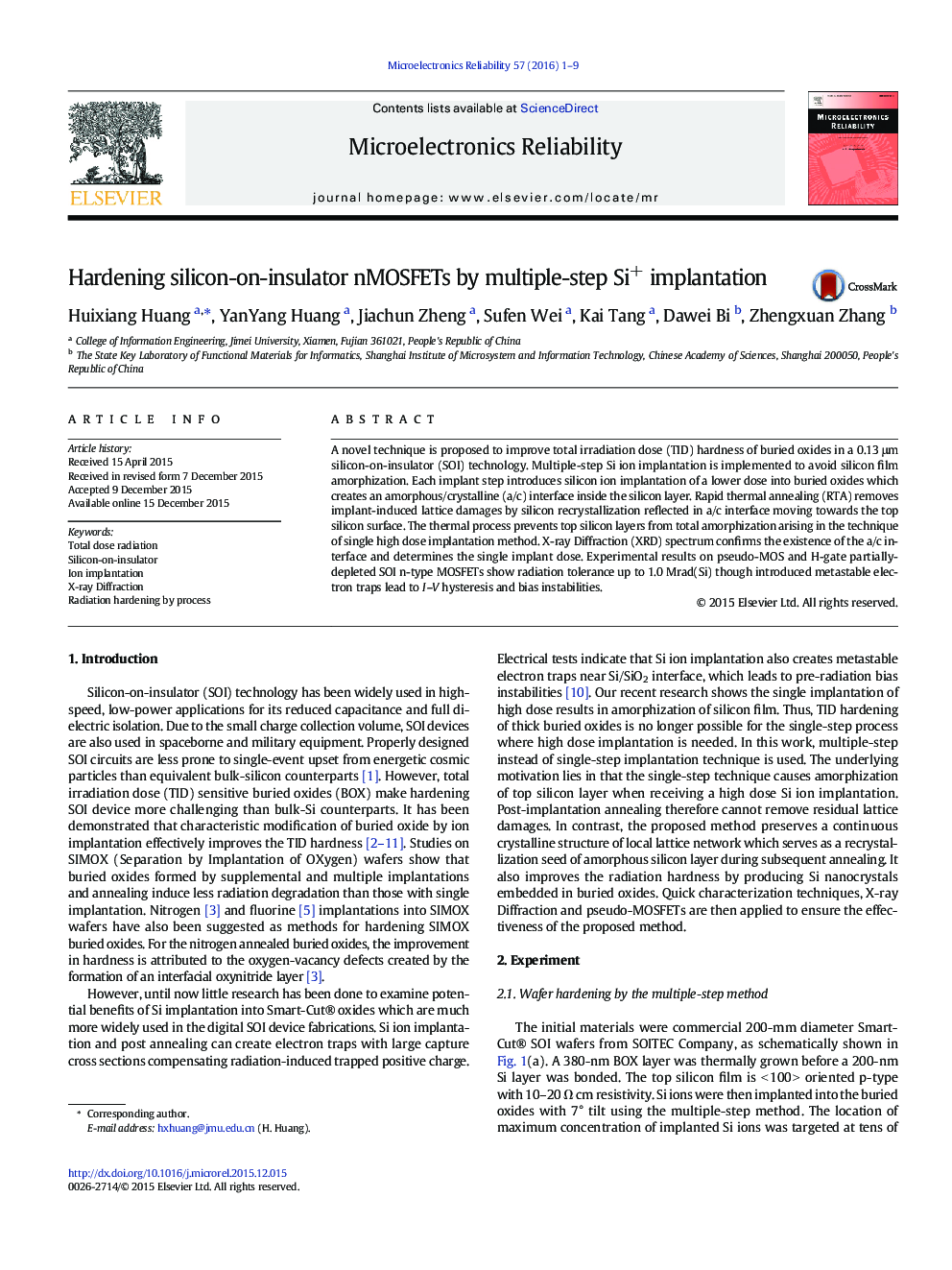| Article ID | Journal | Published Year | Pages | File Type |
|---|---|---|---|---|
| 548088 | Microelectronics Reliability | 2016 | 9 Pages |
•Multiple-step Si implantation is used to harden buried oxides in SOI wafers.•Single implant dose is determined by XRD technique.•Pseudo-MOS characterization is applied to examine film quality.•Hardened partially-depleted SOI devices show tolerance up to 1.0 Mrad(Si).
A novel technique is proposed to improve total irradiation dose (TID) hardness of buried oxides in a 0.13 μm silicon-on-insulator (SOI) technology. Multiple-step Si ion implantation is implemented to avoid silicon film amorphization. Each implant step introduces silicon ion implantation of a lower dose into buried oxides which creates an amorphous/crystalline (a/c) interface inside the silicon layer. Rapid thermal annealing (RTA) removes implant-induced lattice damages by silicon recrystallization reflected in a/c interface moving towards the top silicon surface. The thermal process prevents top silicon layers from total amorphization arising in the technique of single high dose implantation method. X-ray Diffraction (XRD) spectrum confirms the existence of the a/c interface and determines the single implant dose. Experimental results on pseudo-MOS and H-gate partially-depleted SOI n-type MOSFETs show radiation tolerance up to 1.0 Mrad(Si) though introduced metastable electron traps lead to I–V hysteresis and bias instabilities.
